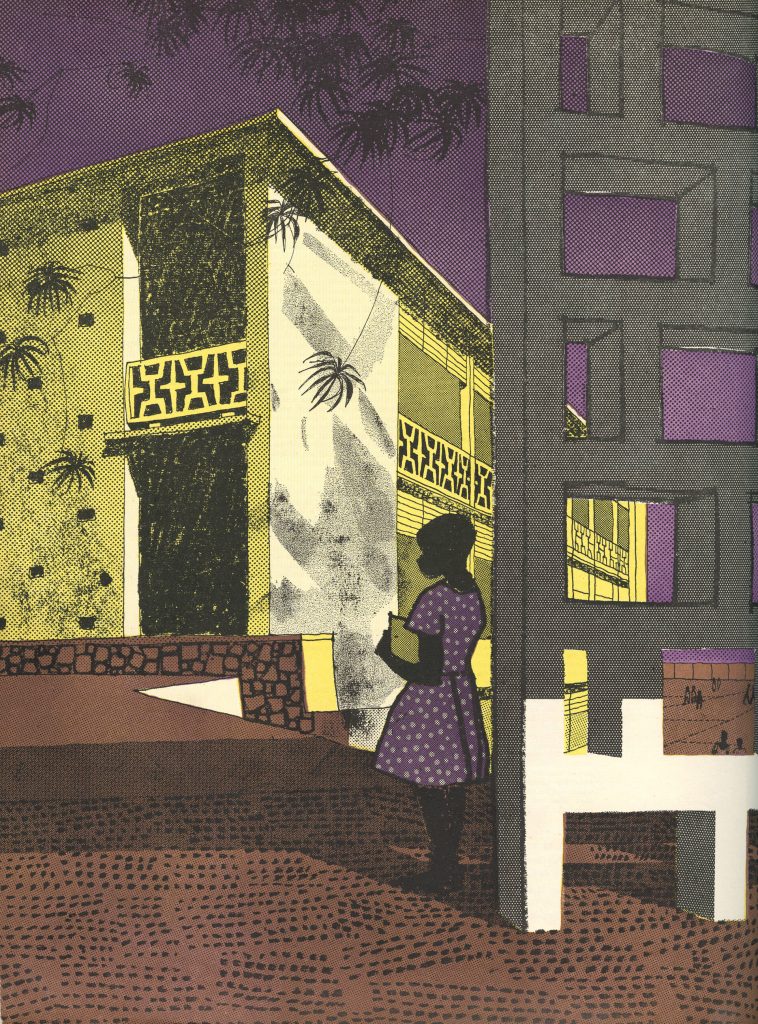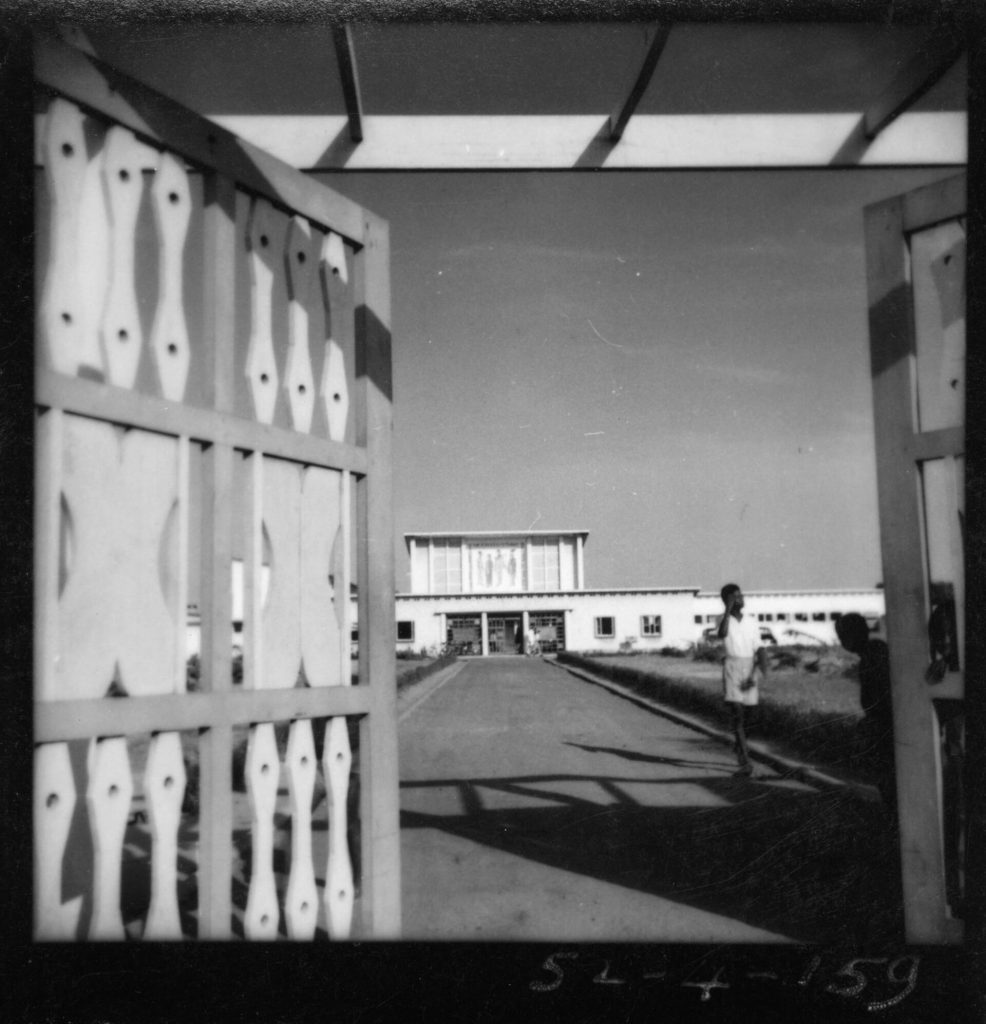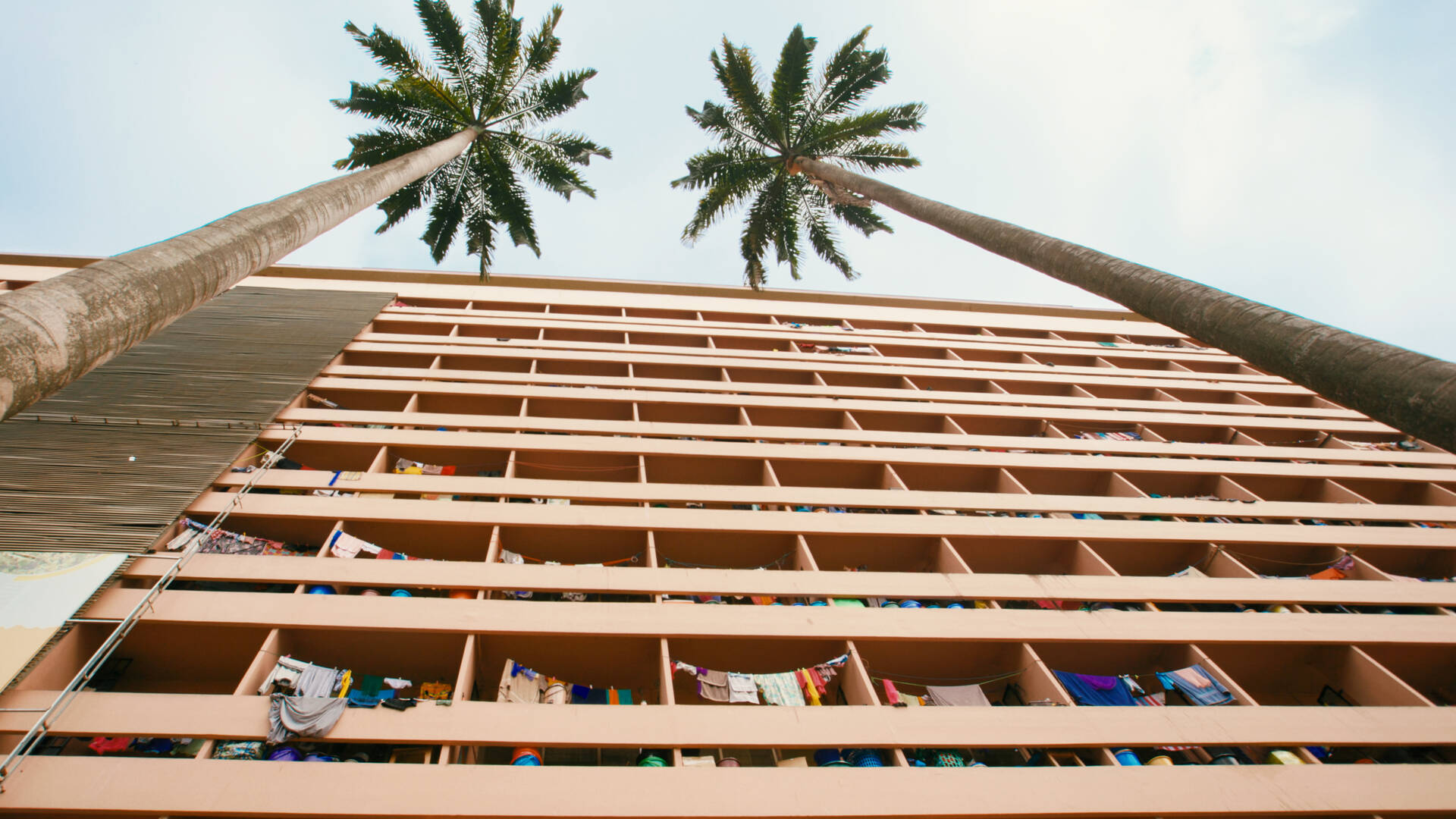From March 2, 2024, the exhibition “Tropical Modernism: Architecture and Power in West Africa” opens at the V&A in London. Organized in collaboration between the Biennale di Venezia and the V&A on the occasion of the 2023 Venice Architecture Biennale, the exhibition retraces, with supporting photographs and a documentary film, the history of the Architectural Association and its Department of Tropical Architecture opened in 1954 in London.
Led by architect Maxwell Fry, the Department of Tropical Architecture initially aimed to teach Europeans how to build in the British colonies in a hot and humid climate. The department was then asked to train Ghanaians after their country’s independence in 1957, through a partnership with the Kwame Nkrumah University of Science and Technology (KNUST) in Kumasi. The exhibition thus examines the complex history of tropical modernism by critically examining the Department of Tropical Architecture, particularly through 14 significant projects.
From March 2, 2024
V&A South Kensington (Porter Gallery)
Cromwell Road, London SW7 2RL
https://www.vam.ac.uk/exhibitions/tropical-modernism-architecture-and-independence





2 – Jane Drew and Maxwell Fry with a model of one of their many buildings for the Gold Coast, 1945
3 – Scott House, Accra by Kenneth Scott, film still from “Tropical Modernism: Architecture and Independence”
4 – Illustration from The Architectural Review, 1953
5 – Senior Staff Club House, KNUST, Kumasi by Miro Marasović, Nikso Ciko and John Owuso Addo, film still from “Tropical Modernism: Architecture and Independence”
6 – Community Centre, Accra, 1953
Organized in collaboration with the Architectural Association (AA), London, and the Kwame Nkrumah University of Science and Technology (KNUST), Kumasi, Ghana, the exhibition highlights how this unique architectural style initially emerged and was used as a means to strengthen colonial rule. . She also explores how newly independent African nations have adapted tropical modernism to envision a pan-African future full of promise and potential. This period of transformation followed the historic achievement of Ghana, the first country in sub-Saharan Africa to gain independence in 1957.
For KNUST, tropical modernism was therefore much more than just a means of nation-building: a manifestation of a pan-African ideology. To bring this vision to life, she collaborated with architects from Eastern Europe, who joined forces with Ghanaian architects; together they started building monumental structures that would serve as symbols for liberated Africa.
First exhibition in Venice
The Venice exhibition, curated by Christopher Turner (V&A), Nana Biamah-Ofosu and Bushra Mohamed (AA), centered around a large 35-metre-long installation based on the parasol motifs of Fry and Drew’s works. This installation then integrates light boxes and display cases presenting photographs, plans and various ephemeral documents, telling the story of tropical modernism.
At the heart of the pavilion, visitors can experience an immersive film shot in Ghana, panoramic portraits of 14 important surviving buildings, including a community center in Accra, the work of Fry and Drew, and the KNUST Unity Hall in Kumasi, the work of de John Owusu Addo. Interviews with survivors who played key roles, such as 95-year-old architect Addo, who trained in London and studied in the Department of Tropical Studies before returning to KNUST to build and teach. In addition, interviews with Samia Nkrumah, politician and daughter of the Prime Minister and President of Ghana, Kwame Nkrumah.
Exhibition in London and book
The soon-to-open exhibition at the V&A in London in turn explores how tropical modernism was adapted by Ghanaian architects to promote pan-African ideals in this period of transition during which new freedoms were won and where the break with the colonial past was expressed. through architecture. The architecture here is both a means of colonial oppression and a symbol of emerging political freedom.
Christopher Turner, curator of art, architecture, photography and design at the V&A, is chief curator of the exhibition “Tropical Modernism: Architecture and Power in West Africa”.

